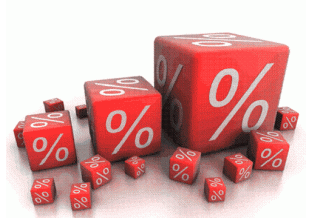
The Australian Bureau of Statistics (ABS) has released the Consumer Price Index (CPI) data for the March quarter 0f 2013, which showed a lack of inflationary pressures across the Australian economy, with the result coming in below economists’ expectations:
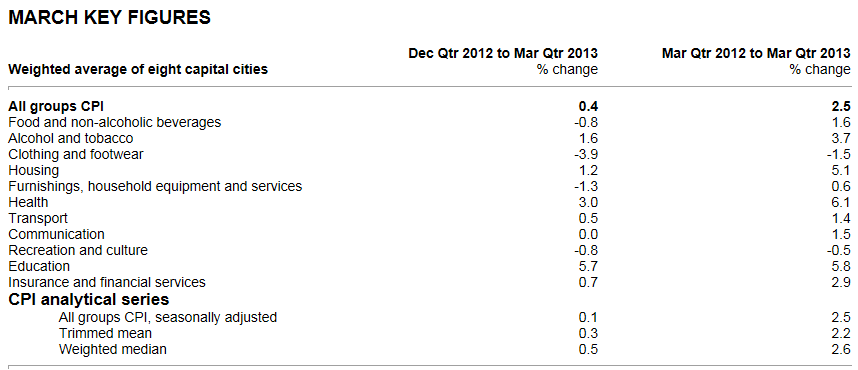
According to the ABS, headline CPI rose by 0.4% in the March quarter, which follows December’s 0.2% rise. You can also see from the below chart that inflationary pressures have moderated following the spike in the September quarter on the back of large increases in electricity and utilities prices following the introduction of the carbon tax:
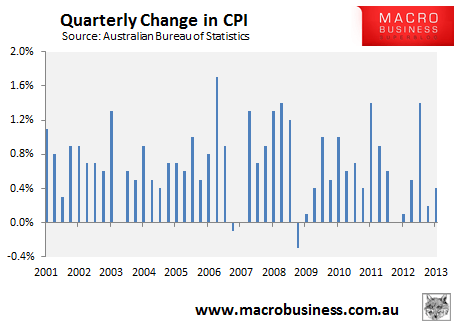
On an annual basis, headline CPI has risen to 2.5% from 2.2% in the December quarter, which is smack in the middle the Reserve Bank of Australia’s (RBA) target of 2% to 3% growth over the medium term. Obviously, annual inflation was also affected by the one-off boost from the introduction of the carbon tax:
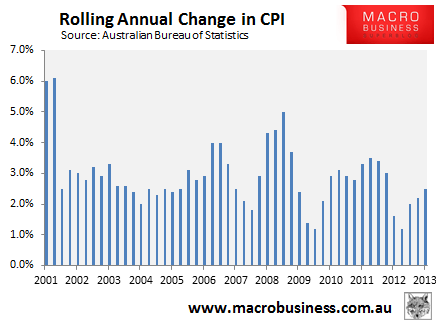
Looking at the core components, you can see that it was a mixed bag, with six categories recording price rises and four price falls. Particularly large price rises in the March quarter were recorded in education and health, whereas clothing and footwear prices fell sharply:
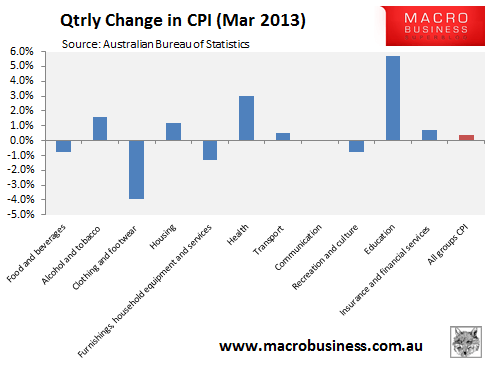
Finally, the ABS includes an ‘analytical series’, which provides alternative measures of underlying inflation in the economy. These measures – namely the trimmed mean and weighted median – aim not to measure the size of inflation (which is captured by the headline figure), but the breadth of price inflation across the basket of consumer goods and services.
The purpose of these measures is to exclude unusually large price movements (in both directions) of just a few of the subgroups, which may have quite an impact on the headline CPI. By excluding these outliers, you can get a feel for how widespread across the consumer basket inflation really is (see here for further details).
According to the ABS, the trimmed mean and weighted median measures split the headline result, rising by 0.3%/0.5% (trimmed mean / weighted median) in the March quarter and by 2.2%/2.6% (trimmed mean / weighted median) over the year – towards the middle of the RBA’s inflation target (see below charts).
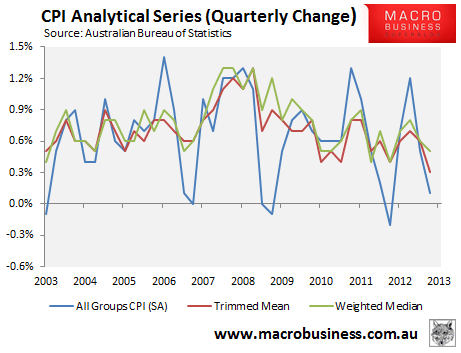
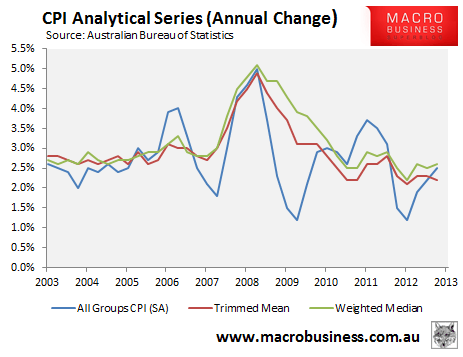
In summary, inflationary pressures across the Australian economy remain in check, with the headline, trimmed mean and weighted median CPI measures all tracking well within the RBA’s target band.

